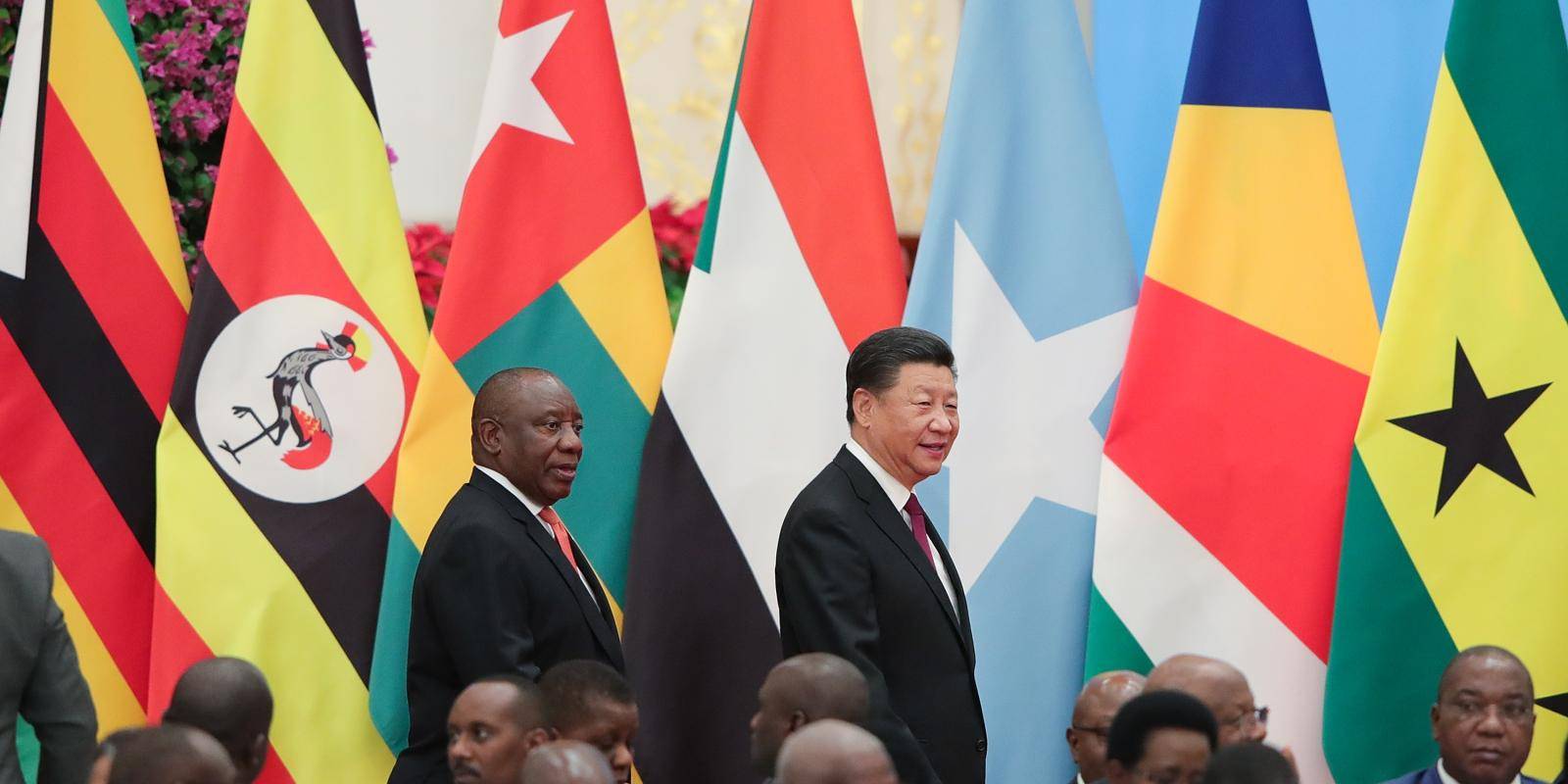Khatondi Soita Wepukhulu, a Ugandan journalist of rare find, recently challenged my long-held views on corruption. Over time, I had come to deeply question the prevailing narratives surrounding corruption among Africa’s ruling elites. I had come to think, and still do, that there are fundamental epistemological miscomprehensions and biases about corruption in Africa, which are less about corruption and more about the racial-stereotypical description of Africans in general and their leaders in particular. The dominant discourses on many issues in Africa and about Africans are usually overgeneralized and oversimplified. This is largely still the case in discussions on corruption.
My agnosticism was firstly on the scale and impact of elite corruption on the national development of African countries. I grew up writing poetry against corruption. It was the easiest subject for creative writing in literature classes because we were raised to think it was Africa’s biggest problem. However, a counter-narrative emerged when my mind was opened to the actual fiscal capacity available for potential embezzlement and misappropriation of public funds in a country like Uganda.
Let us first consider the structural constraints of public finances in many African countries. Given our poverty, many African governments have limited money to spend. Our budgets are much smaller compared to the size of our economies. Our basic needs also outspend our incomes. For instance, Uganda’s tax-to-GDP ratio is about 13%. What this means is that the total amount of taxes collected by the Ugandan government each year is equal to only 13% of the country’s total economic output (GDP). This clearly shows that a very small fraction of Uganda’s economy is taxable/taxed, and consequently, the government has little money to spend on public services like healthcare, education, and infrastructure. Also, for context, Uganda’s tax-to-GDP ratio is much lower than that of many wealthier countries, where the average is 34%.
The second leg of the argument above is that Uganda/African countries’ already constrained budgets are unavoidably committed to non-discretionary spending obligations. Remember, we are talking about the budget before it is passed and, thus, before one shilling of it has been misappropriated. The non-discretionary spending obligations referred to above include committed/recurrent expenses that must be paid by law or out of necessity, meaning the government of Uganda has no choice but to spend this money appropriately. Some of these expenditures include: debt payments, i.e., paying back loans and interest; salaries for government workers such as teachers, members of parliament, RDCs, doctors, soldiers, and police officers; pensions and social security to retired government workers; basic public services like healthcare, education, and security that the government must provide. If we break down Uganda’s national budget, it is clear that a significant portion of it is allocated to these committed expenditures. For instance, in the recent budget, debt Repayment consumed 3.1 trillion for external debt and UGX 9.1 trillion for domestic debt. Wages and Salaries of government employees consumed UGX 7.926 trillion. There are also so many other expenses that cannot be captured due to limited space in this newspaper, such as scholarships for government-sponsored students in universities, etc. All these mandatory expenditures combined amount to approximately UGX 29.126 trillion, representing about 40% of our total national budget. Compared to any wealthy, developed country, this is a substantial allocation to non-discretionary spending, which limits the government’s fiscal space or financial flexibility to spend on new development programs, or for that matter, to steal the money.
The intriguing paradox presented by the fiscal reality of many of our African governments, as described above, begs the question: If African governments have so little extra money to misuse, can corruption really be the main reason for underdevelopment? Even if our leaders were to steal all the money that wasn’t already budgeted for recurrent expenditures (quite an implausible scenario), there still wouldn’t be enough to make a big difference in our countries’ development.
That is the mathematical impossibility and first indictment I found against the banal, stereotypical, overused platitude that corruption is the biggest cause of underdevelopment in Africa. Realistically speaking, for a typical African country like Uganda, with just about 2-3% of its GDP available to spend on development projects due to budget limitations, the resulting infrastructure gaps – whether it is insufficient electricity, poor public transport system, poor education/medical facilities – are inevitable regardless of the ethical height of our leaders. We could as well appoint Jesus, Mohammed, and Budha to govern Uganda, and they would do little to nothing to provide public goods and services with such a lean budget.
Of course, there are even many other arguments to deconstruct the corruption narrative. For instance, many of the developed nations actually experienced significant corruption during their periods of industrial transformation.
The wisdom from the foregoing observations made me realise that the development challenges facing African nations may be more fundamentally rooted in structural economic constraints such as low tax bases, limited industrial capacity, unfavourable terms of trade, and debt burdens – than in governance ethics. “It is the political economy, not the morality of African leaders, Stupid,” I might say.
Then enters Khatondi.
My conversation with Khatondi Soita Wepukhulu on corruption and its effect, if any, on Uganda’s development took a different tangent when she said the economics of corruption were beside the point!
“When some minister in China is hanged for stealing $100 million, it isn’t because the dent to the economy is big. Moralisation of corruption by the political elite of the day is super crucial to building the nationalist consensus required to do other things,” she said. This was an argument difficult to challenge.
She argued that “China and the Asian Tigers we admire have a strict culture on theft of public funds… What our normalized theft does is kill nationalist agency and responsibility of self towards country.”
“That is the sort of harm that a larger public wallet can’t rectify.” She continued.
I couldn’t agree more.
Khatondi’s argument introduced me to a profound dimension of why corruption in Africa matters, which I had since overlooked. I read in her point something which has been significantly degraded almost to extinction in Museveni’s NRM government – the existence of a strong public spirit in public service!
Current estimates show that China has a nominal GDP of approximately $18.28 trillion – which comes to about $37.07 trillion in Purchasing Power Parity terms (PPP). So, if a Chinese minister is executed for embezzlement of $100 million, it can’t be primarily because the theft presents a serious threat to the performance of the Chinese economy. Such strict political discipline rather represents something far more fundamental to the health of the nation: the establishment of moral authority and collective purpose in national politics.
I think that China stands highly uncompromising against elite corruption not because such theft would bankrupt its inexhaustible treasuries but because it would corrupt the soul of the Chinese state… it would fracture the moral legitimacy of the Chinese Communist Party (CCP). The severe punishment of corrupt Chinese officials, therefore, serves as a powerful ritual reminding other CCP ruling elites of the primacy of national interest over individual enrichment.
In the morning of the NRM government in the late 80s and early 90s, the state’s leadership viewed itself as a servant to a national mission. The stark contrast today is that NRM ruling elites stand rather as privileged beneficiaries of power. The moral authority that enables the Chinese government to demand sacrifices from its citizens in service of long-term development goals is absent in Uganda because of the corrupt degeneration of the NRM political class. That might be the biggest threat to the development of our country.
The normalization of elite theft in many African states has corroded the very foundation of national purpose. It is hard to see, for example, in Uganda, whether the government still has a purpose to power. It seems President Museveni’s will to power has degenerated into holding power for power’s sake, given the lawlessness with which corrupt public officials who occupy key NRM positions walk scot-free. When Ugandans regularly witness politicians engaging in brazen self-enrichment, it fractures our nation beyond the economic impact of corruption. It breeds a cynical individualism that now sees everyone buying the biggest Toyota to manoeuvre giant pot-holes in our roads instead of caring for the public infrastructure systems for the collective good.
This is why my initial persuasion on simply increasing African countries’ fiscal capacity, while important, cannot solve our fundamental problem. Widening our national budget space might enable more development spending even with some leakage to corruption, but it cannot restore the moral authority required for transformative national projects. Our leaders cannot demand sacrifice from us while they openly engage in self-enrichment.
China’s strict political disciplinary model echoes a profound lesson: uncompromising moral standards for leadership are central to building public trust with citizens, which rallies them around the nation’s development vision. Unless the NRM government rebuilds its moral authority over the state through a genuine commitment to public service, not even the vast oil resources we are hoping for will fuel our country’s transformation. When history books are written, perhaps NRM’s greatest corruption will not be the theft of money but the theft of Ugandans’ faith in the state to do good.
The writer is a senior research fellow at the Development Watch Center.








